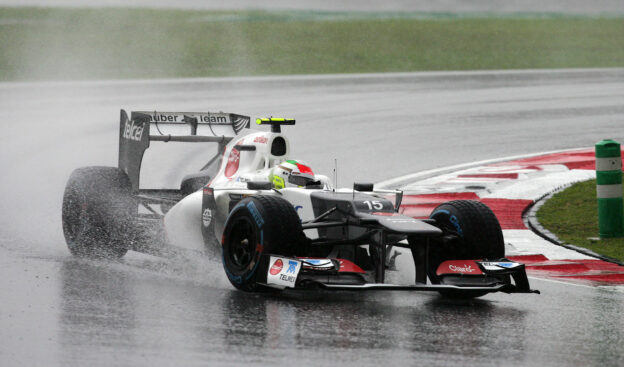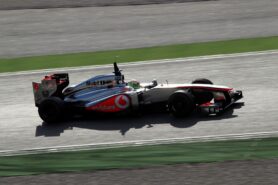Preview Malaysian F1 Grand Prix

After the exciting first race in Australia last weekend, it's time for the blistering hot and wet Malaysian F1 GP this weekend.
The toughest compound in Pirelli’s new 2013 range of F1 tyres makes its debut for Malaysia, complete with a brand new colour. The P Zero Orange hard has been nominated for Sepang together with the P Zero White medium, which was already seen in Australia. The two hardest compounds in Pirelli’s range are ideal for the extreme temperatures and abrasive surface of Malaysia. Sepang circuit is also well-known for its monsoon-like downpours, which make it extremely likely that the Cinturato Green intermediate and Cinturato Blue full wet tyres will be seen at some point over the course of the weekend.
Pirelli’s motorsport director says:
“We would describe Sepang as genuinely ‘extreme’: both in terms of weather and track surface. This means that it is one of the most demanding weekends for our tyres that we experience all year. For the first time we see our new Orange hard compound in competition, with this colour chosen to make it more easy to distinguish from the white medium on television. The nomination we have for Malaysia is the same as last year, but the compounds themselves offer more performance and deliberately increased degradation this season, Last year three stops proved to be the winning strategy in a mixed wet and dry race, with a thrilling finish between Fernando Alonso and Sergio Pérez that was all about tyres. We’d expect three stops again but once more it’s likely to be weather that dominates the action. Even when it isn’t raining, the drivers can expect humidity in the region of 80% and ambient temperatures of more than 30 degrees centigrade.”
Pirelli’s brand ambassador Jean Alesi says:
“I’ve taken part in the Malaysian Grand Prix twice: the first time in 1999, which was the inaugural year, and the second time in 2000, which was my final year in Formula One. On both occasions I finished, but I remember what a big challenge it was both for the drivers and the cars: physically it is one of the most demanding races on the calendar. Like Albert Park, Sepang is by no means a ‘typical’ circuit, so what we see happening this weekend is probably not going to be representative of the rest of the season. However, it will certainly show you who has a strong car and a good ability to manage the tyres. With more degradation this year, knowing how to manage the tyres becomes an even more important skill – as it has always been in the history of Formula One – and Malaysia puts the spotlight on this. But if it really starts to rain hard then there is absolutely nothing you can do: it is just a question of trying to survive. So we could have a very interesting result depending on who makes the correct tyre choices.”
The F1 tyre from circuit point of view
Malaysia is one of the more abrasive surfaces that the cars compete on all year, which is part of the reason why the two hardest compounds from the range have been nominated.
The P Zero Orange hard tyre has a high working range, whereas the P Zero White medium has a low working range. This makes it an ideal combination that can deal well with any eventuality. The durability characteristics of the new hard tyre are close to those of last year’s medium tyre, resulting in lap times that are around 0.4s-0.5s quicker than the 2012-specification hard.
The Sepang track is built on what was formerly a swamp, with a fundamentally uneven surface. However, the asphalt was resurfaced in 2007, which smoothed out most of the bumps – although some remain.
Last year, the hard and medium compounds were also chosen for the Malaysian Grand Prix. The top five drivers adopted a three-stop strategy: intermediate-wet-intermediate-slick. Bruno Senna meanwhile, in fifth place, stopped four times.
Technical F1 tyre notes
Malaysia places heavy lateral demands on the tyres; it’s the second-highest lateral load of the year after Barcelona. This can lead to heat build-up within the tyre, which can reach a maximum of 130 degrees centigrade.
Sessions at the Malaysian Grand Prix in the past have been frequently interrupted by heavy rain, and the race was even halted early in 2009, with half-points being awarded. Pirelli has a new specification of Cinturato Green intermediate and Cinturato Blue full wet tyre this year; with a redesigned construction to help improve traction and prevent snap oversteer.
Although grip levels are high in Malaysia, the frequent rain has the effect of washing any rubber that has been laid down off the track overnight, meaning that there is often a ‘green’ surface at the start of each session. While a dry line can emerge quickly because of the high ambient temperatures, drainage at Sepang is not particularly good, which can lead to pools of standing water.
✅ Check out more posts with related topics:

















LAST 3 F1 Fan COMMENTS